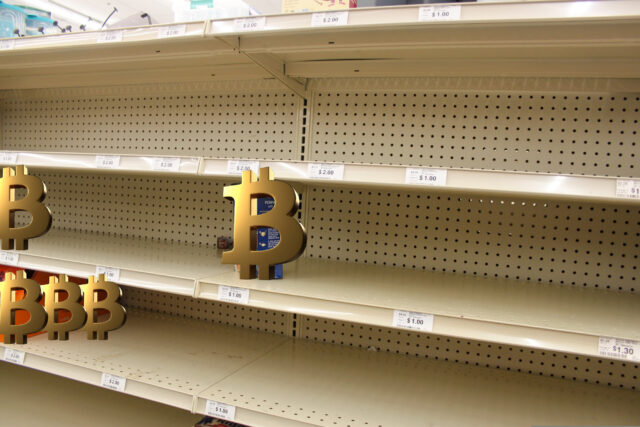Investors and traders are closely monitoring the dynamics of Bitcoin supply, especially in anticipation of the upcoming halving events. Recent reports from leading crypto exchanges and industry experts suggest that a Bitcoin supply shock might be on the horizon, leading to potential shortages. This article delves into the factors contributing to this supply squeeze and explores the implications for the broader crypto ecosystem.
Understanding the Bitcoin Supply Shock
Cryptocurrency exchange Bybit recently released a report highlighting the dwindling reserves of Bitcoin on exchanges. It indicates that only nine months’ worth of supply remains at current prices. This depletion is attributed greatly to increased institutional adoption. The upcoming halving event will reduce the mining reward by 50%. With just 2 million Bitcoins left and significant daily outflows to Bitcoin Spot ETFs, the supply crunch is expected to intensify, potentially leading to shortages soon.
Factors Driving the Supply Shortage
Institutional investors have been instrumental in driving the recent bull market in cryptocurrencies. They have contributed significant capital inflows into Bitcoin and other digital assets. The approval of Bitcoin spot ETFs in the United States has facilitated institutional entry into the market. This led to heightened demand and dwindling exchange reserves. Additionally, the upcoming halving event will reduce the rate of new Bitcoin issuance, exacerbating the supply shortage.
Implications for the Crypto Ecosystem
The looming Bitcoin supply shortage has significant implications for the broader crypto ecosystem. As supply dwindles and demand remains robust, the price of Bitcoin is expected to experience upward pressure. However, increased scarcity could also fuel volatility in the market, as traders and investors react to the evolving supply dynamics. New all-time highs are likely, but not guaranteed. Moreover, the shortage of Bitcoin on exchanges may prompt users to seek alternative sources or platforms for acquiring the digital asset. The crypto landscape might be due for a fundamental reshape.
In conclusion, the prospect of a Bitcoin supply shock underscores the dynamic nature of the cryptocurrency market and the importance of monitoring supply-side dynamics. With exchange reserves rapidly depleting and institutional demand rising, the possibility of a shortage in Bitcoin supply is becoming increasingly plausible. As the market prepares for the upcoming halving events, investors and traders must remain vigilant and adapt their strategies to navigate potential disruptions in the world’s largest cryptocurrency supply.










